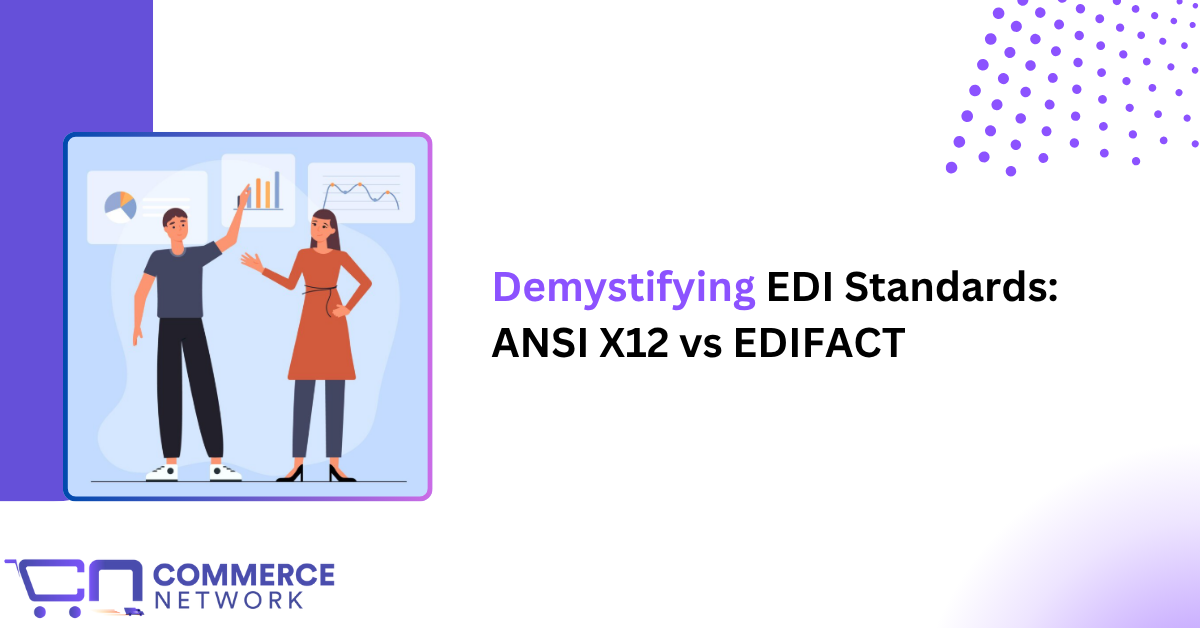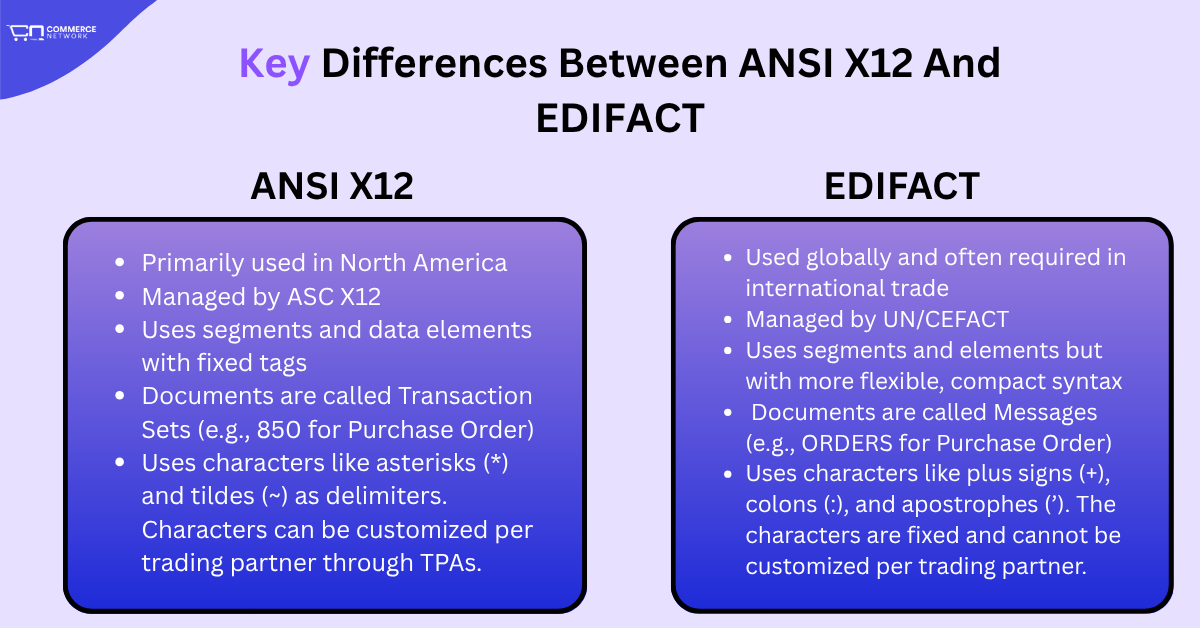
Electronic Data Interchange (EDI) allows businesses to exchange documents like purchase orders, invoices, and shipping notices electronically. Two major global standards dominate the EDI landscape: ANSI X12 and EDIFACT. Understanding these standards is crucial for businesses operating internationally or across various industries. While both serve the same goal, their structure, history, and regional adoption differ significantly.
In this article, we’ll walk through the differences between ANSI X12 and EDIFACT, starting from the basics and moving toward technical details.
With EDI, businesses can:
ANSI X12 (mostly used in North America)
EDIFACT (used globally, especially outside North America)
ANSI X12
EDIFACT
Let’s look at the basic areas where they differ.
1. Regional Usage
ANSI X12: Primarily used in North America
EDIFACT: Used globally and often required in international trade
2. Governing Bodies
ANSI X12: Managed by ASC X12
EDIFACT: Managed by UN/CEFACT
3. Structure
ANSI X12: Uses segments and data elements with fixed tags
EDIFACT: Uses segments and elements but with a more flexible, compact syntax
4. Document Naming
ANSI X12: Documents are called Transaction Sets (e.g., 850 for Purchase Order)
EDIFACT: Documents are called Messages (e.g., ORDERS for Purchase Order)
5. Delimiters
ANSI X12: Uses characters like asterisks (*) and tildes (~) as delimiters.
The characters can vary depending on the trading partner. (i.e., trading partners can use any characters for demiliters while the characters like asterisks (*) and tildes (~) are commonly used but not required. In short, custom delimiters are flexible in ANSI X12.)
EDIFACT: Uses characters like plus signs (+), colons (:), and apostrophes (’)
The characters cannot vary depending on the trading partner. They are defined by the standard itself and are non-negotiable among trading partners. (i.e., custom delimiters are fixed in EDIFACT.)

Now let’s explore how each standard organizes a typical message. This is where technical users often face challenges.
ANSI X12 Message Layout
Example:
|
ISA*00* *00* *ZZ*MYCOMPANY *ZZ*THEIRCOMPANY *230630*1345*U*00401*000000001*0*P*>~ GS*PO*MYCOMPANY*THEIRCOMPANY*20230630*1345*1*X*004010~ ST*850*0001~ BEG*00*NE*123456789**20230630~ N1*ST*COMPANY NAME*92*1234~ PO1*1*10*EA*25.00**VP*123456~ SE*6*0001~ GE*1*1~ IEA*1*000000001~ |
EDIFACT Message Layout
Example:
|
UNB+UNOA:1+MYCOMPANY+THEIRCOMPANY+230630:1345+000000001' UNH+1+ORDERS:D:96A:UN' BGM+220+123456789+9' DTM+137:20230630:102' NAD+BY+123456789::16' LIN+1++123456:VP' QTY+21:10' UNS+S' UNT+8+1' UNZ+1+000000001' |
ANSI X12 uses numeric transaction codes like:
EDIFACT uses message names like:
This means if your trading partner uses X12, they may say “send me an 850,” while an EDIFACT partner might say “send me an ORDERS message.”
ANSI X12 is popular in:
EDIFACT is popular in:
Pros:
Cons:
Pros:
Cons:
Delimiters
ANSI X12 uses:
EDIFACT uses:
Control Segments
These segments wrap the entire document like an envelope.
Looping
Both standards allow data loops, which are used to repeat related data blocks (e.g., multiple items in an order)
Here are a few areas where differences can create problems:
Both standards have multiple versions, and businesses must agree on which one to use.
Even a small difference in version can cause compatibility issues if systems are not aligned.
A US-based Manufacturer Working with Walmart
A Logistics Company Shipping to Europe
A Multinational Company
If you operate globally, especially with partners in Europe or Asia, EDIFACT will likely be required. Many large enterprises support both and expect suppliers to match their form.
ANSI X12 and EDIFACT are two sides of the same EDI coin. They serve the same purpose but are built differently, much like American English and British English. Understanding their differences helps businesses prepare for global trade and avoid costly miscommunications.
If your business is growing internationally, it’s smart to:
By doing this, you’ll ensure your business is ready for efficient, seamless digital communication with partners no matter where they are in the world.
Improve Your B2B, B2G, and B2C Ecommerce?
Integrate EDI For Efficiency, Compliance, and Scalability?
Just Curious About EDI?
Give Us A Call
202-280-7060